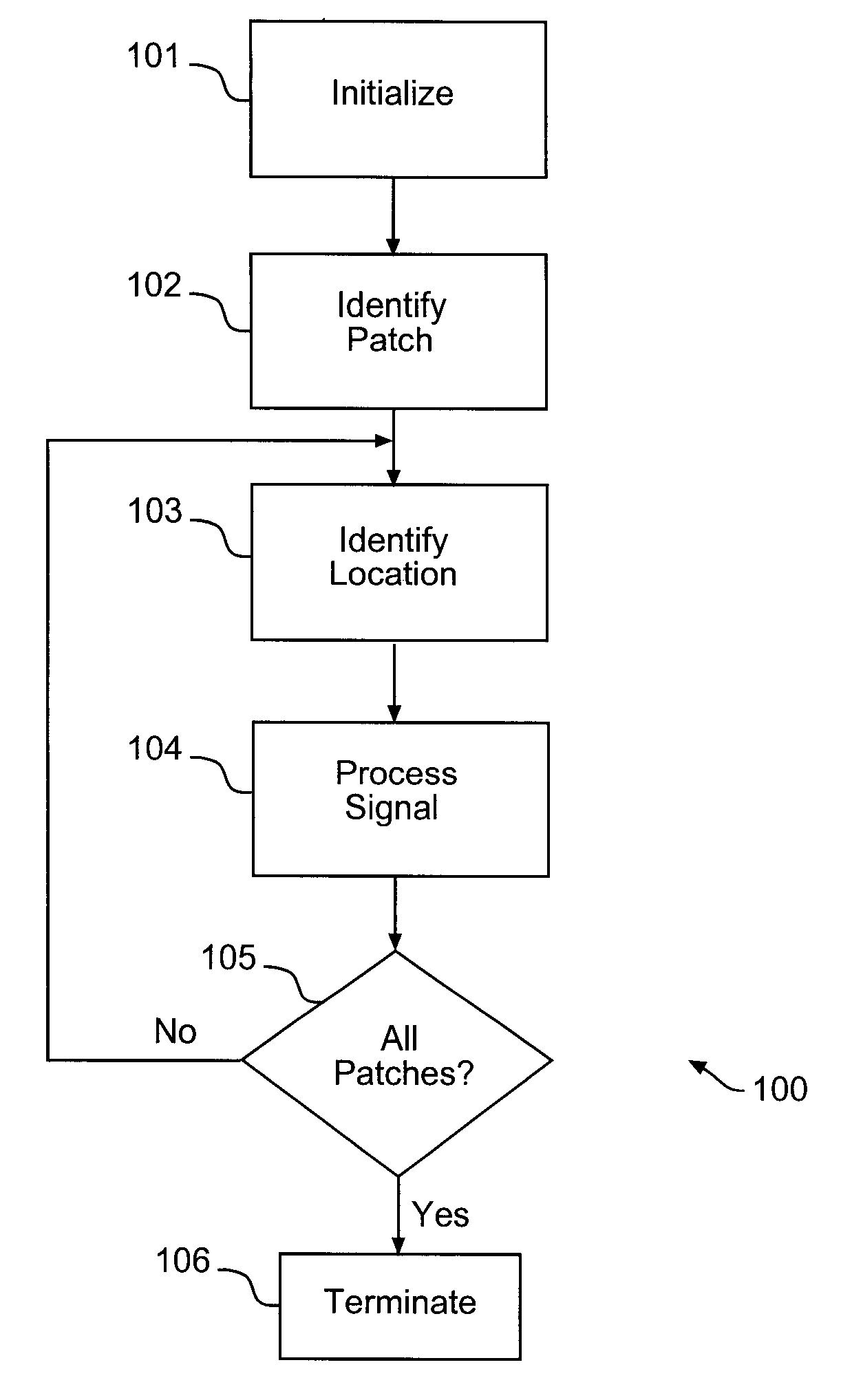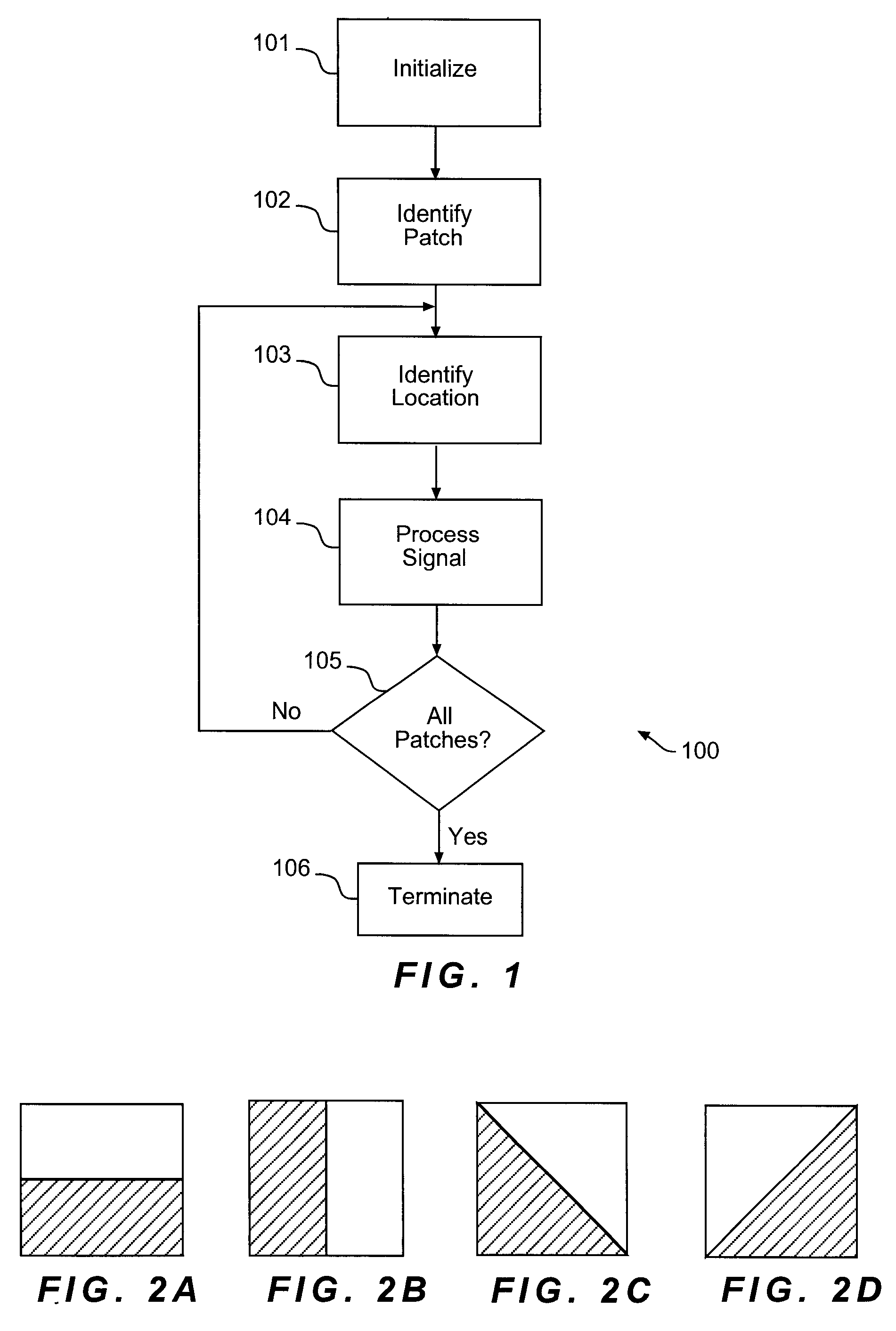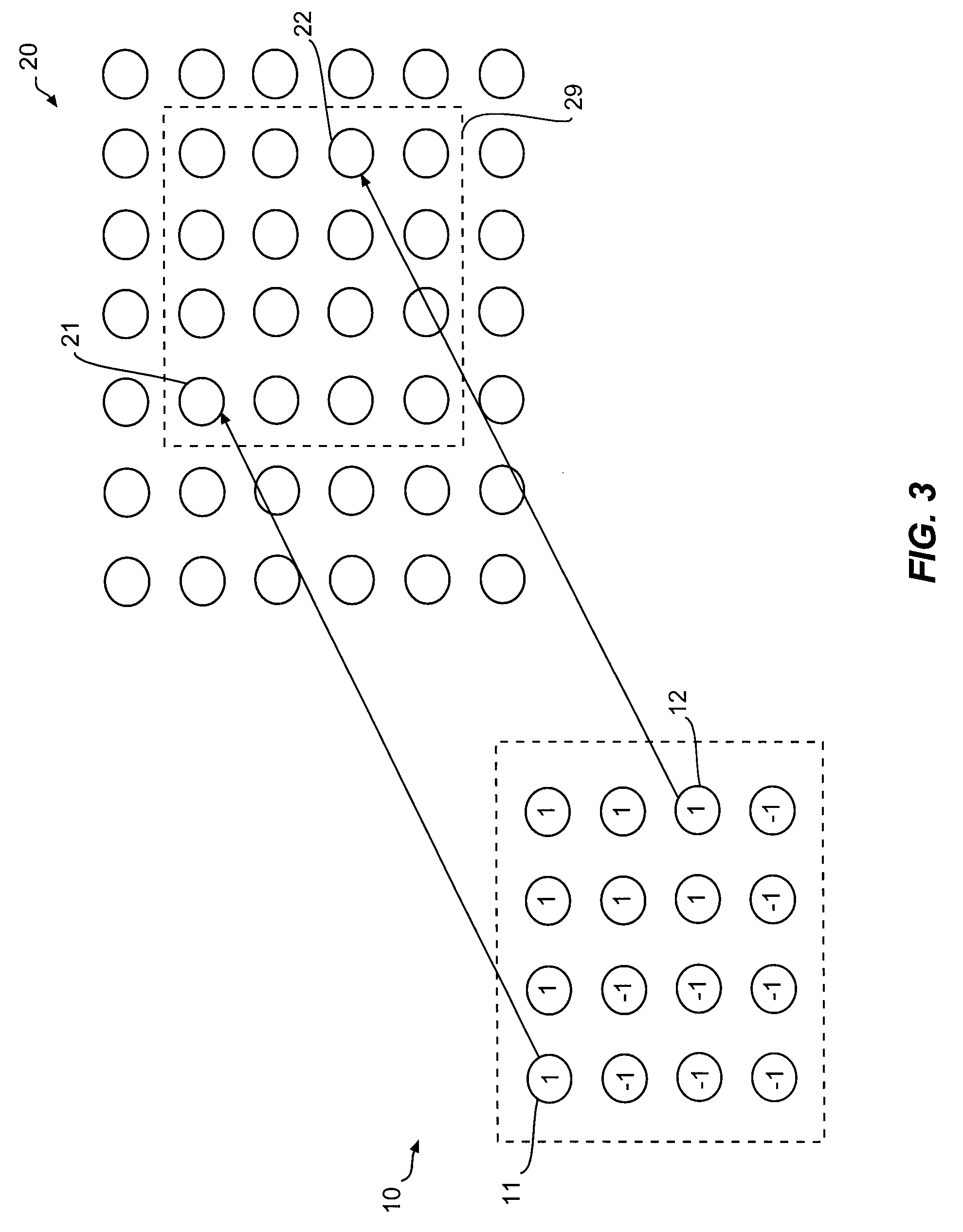Watermarking with random zero-mean patches for copyright protection
a technology of copyright protection and random zero-mean patches, applied in the protection of programs/contents, television systems, instruments, etc., can solve problems such as conflicting goals, inconvenient detection of embedded information, and unauthorized removal, and achieve the effect of efficient detection of embedded information
- Summary
- Abstract
- Description
- Claims
- Application Information
AI Technical Summary
Benefits of technology
Problems solved by technology
Method used
Image
Examples
Embodiment Construction
A. Overview
1. Signal Processing Method
The diagram shown in FIG. 1 illustrates steps in method 100 for embedding information such as a watermark or a fingerprint into a cover object such as a digital signal conveying an image and for detecting such embedded information. The term "watermark" sometimes refers to embedded information that indicates ownership of the associated cover object. As such, the presence or absence of the watermark can indicate whether an entity is the owner of a cover object. The term "fingerprint" sometimes refers to embedded information that identifies the origin of a particular copy of a cover object. For example, a fingerprint can convey the serial number of the printer that was used to obtain a printed copy of the cover object. In this disclosure, the term "watermark" is used as a generic reference to essentially any type of embedded information.
Step 101 performs initialization activities such as initializing a random number generator or initializing inform...
PUM
 Login to View More
Login to View More Abstract
Description
Claims
Application Information
 Login to View More
Login to View More - R&D
- Intellectual Property
- Life Sciences
- Materials
- Tech Scout
- Unparalleled Data Quality
- Higher Quality Content
- 60% Fewer Hallucinations
Browse by: Latest US Patents, China's latest patents, Technical Efficacy Thesaurus, Application Domain, Technology Topic, Popular Technical Reports.
© 2025 PatSnap. All rights reserved.Legal|Privacy policy|Modern Slavery Act Transparency Statement|Sitemap|About US| Contact US: help@patsnap.com



